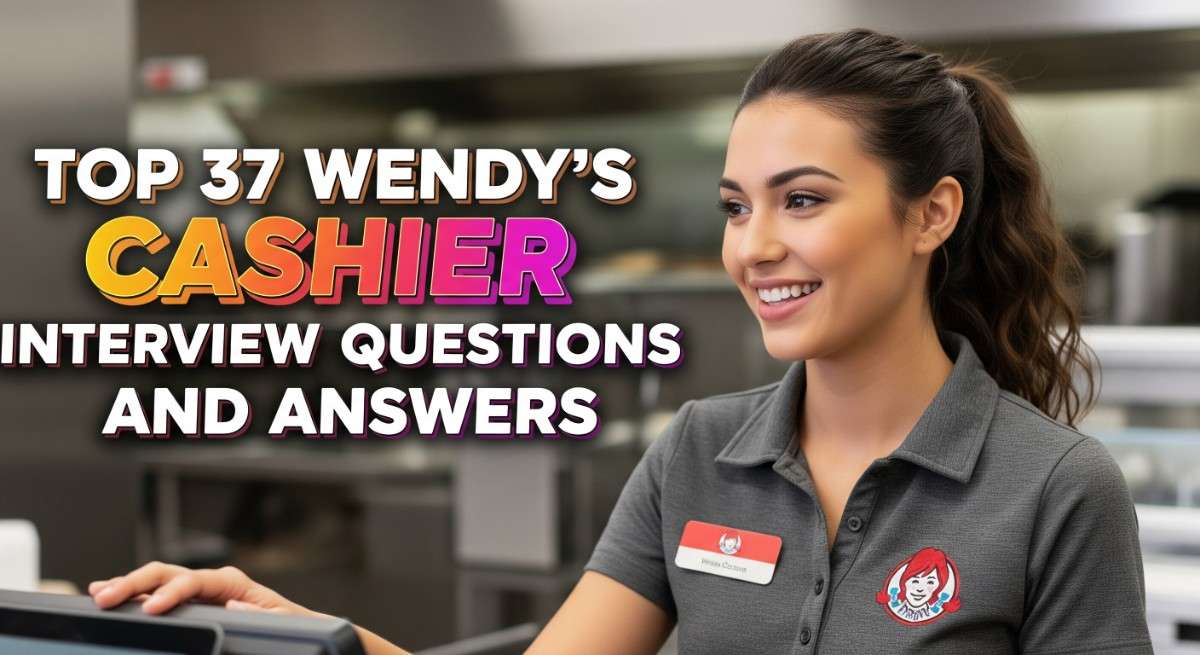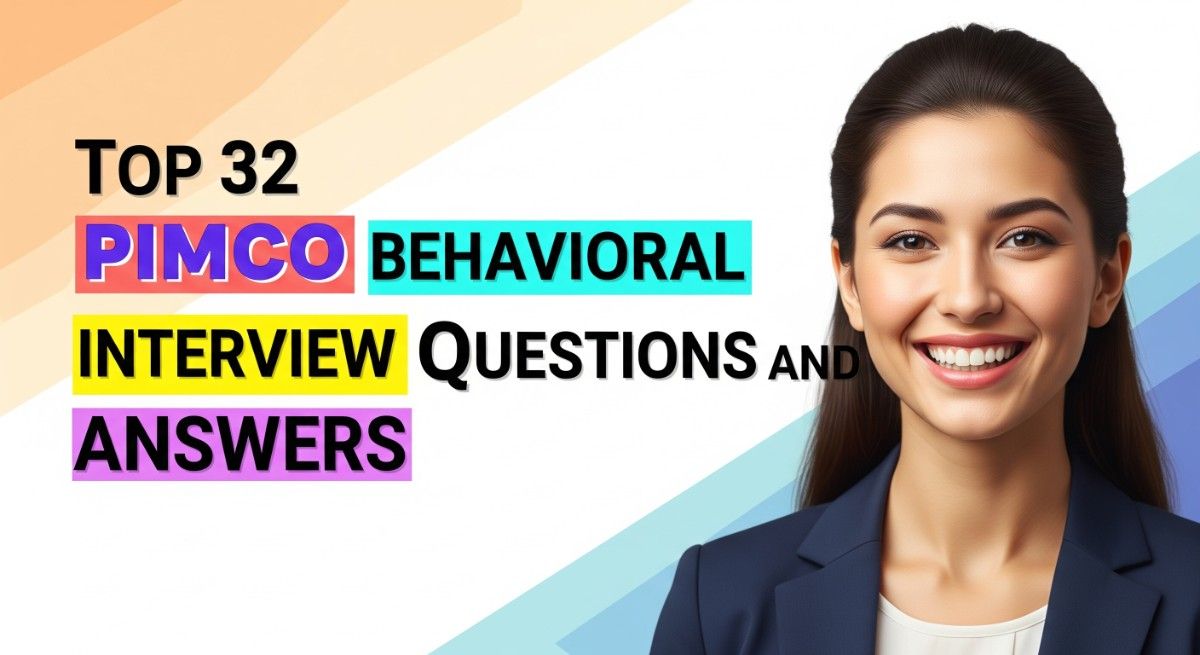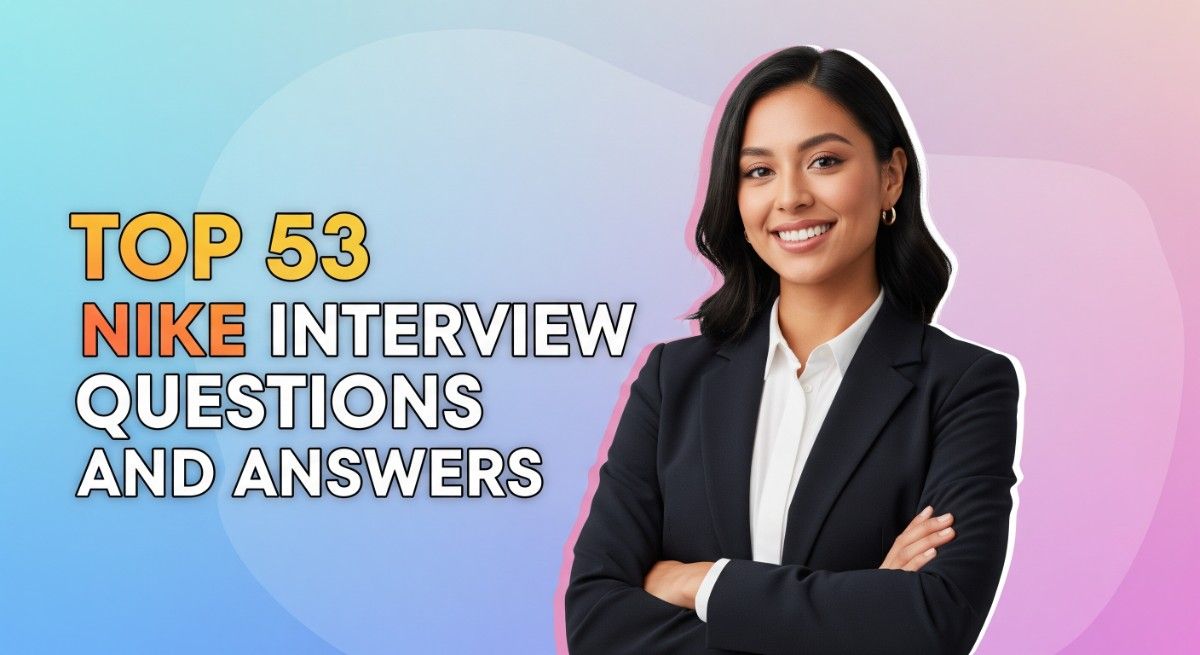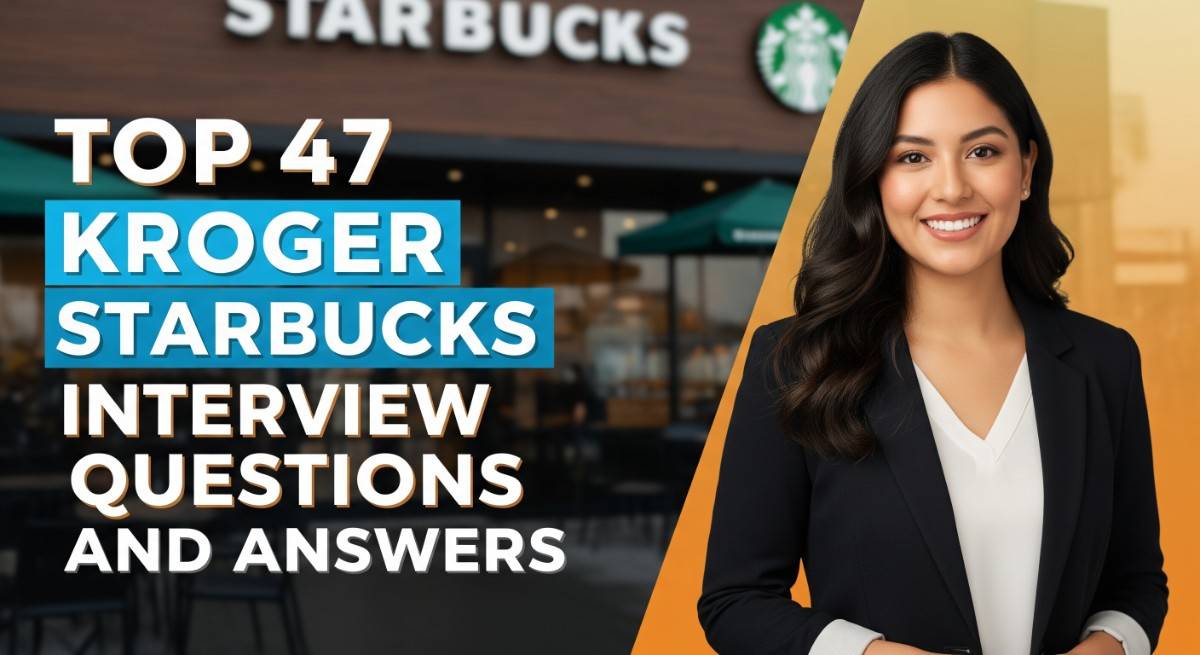
Top 47 Fraternity Interview Questions and Answers for 2025
Preparing for a Fraternity interview is a unique opportunity to showcase your personality, values, and commitment to community. Unlike traditional job interviews, this process revolves around cultural fit, leadership potential, and the desire to foster lifelong connections. Proper preparation is crucial, as it helps you articulate your motivations, understand the fraternity’s mission, and demonstrate how you align with its ideals. This comprehensive guide will cover essential topics including common interview questions, tips for making a lasting impression, and strategies for expressing your passion for brotherhood and service. With the right preparation, you can confidently navigate the interview and embrace the opportunity to join a meaningful community.
What to Expect in a Fraternity Interview
In a Fraternity interview, candidates can expect a combination of formal and informal formats, often conducted by active members or alumni. The interview typically begins with introductions and a brief overview of the fraternity’s values and mission. Candidates may face a series of questions assessing their interests, leadership experiences, and alignment with the fraternity’s culture. Additionally, group discussions or icebreaker activities might be included to gauge teamwork and social skills. The process aims to identify candidates who not only fit the fraternity’s ideals but can also contribute positively to its community.
Fraternity Interview Questions For Freshers
This collection of Fraternity interview questions for freshers focuses on essential concepts and skills that newcomers should master. Covering fundamental topics, these questions will help candidates prepare effectively for interviews in fraternity environments.
1. What are the core values of a fraternity?
The core values of a fraternity often include brotherhood, scholarship, leadership, service, and community. These values promote a sense of belonging among members, encourage academic excellence, and foster leadership skills. Additionally, they emphasize the importance of giving back to the community through service activities, thereby developing well-rounded individuals who contribute positively to society.
2. How do you handle conflicts within a fraternity?
Handling conflicts within a fraternity involves open communication, active listening, and mediation. It’s essential to address issues promptly and ensure that all parties feel heard. A structured approach may include:
- Identifying the root cause of the conflict
- Facilitating a discussion between the involved parties
- Reaching a compromise or resolution that respects everyone’s perspectives
This approach fosters a supportive environment and strengthens brotherhood.
3. Why is academic performance important in a fraternity?
Academic performance is crucial in a fraternity because it reflects the commitment to scholarship and personal growth. Many fraternities have GPA requirements to ensure that members prioritize their education. This focus on academics not only helps individuals succeed in their studies but also enhances the fraternity’s reputation and fosters a culture of intellectual engagement.
Build your resume in just 5 minutes with AI.

4. What role does philanthropy play in fraternity life?
Philanthropy plays a vital role in fraternity life by fostering community engagement and social responsibility. Fraternities often organize fundraising events and service projects to support charitable causes. This involvement helps build camaraderie among members, enhances leadership skills, and allows fraternities to positively impact their communities, promoting values of altruism and teamwork.
5. How can new members contribute to a fraternity?
New members can contribute to a fraternity in several ways:
- Participating in events: Joining social, academic, and philanthropic events strengthens the fraternity community.
- Bringing fresh ideas: New perspectives can lead to innovative initiatives and improvements.
- Building relationships: Engaging with existing members fosters a sense of brotherhood and unity.
These contributions enhance the fraternity experience for everyone involved.
6. Describe a time you demonstrated leadership.
Leadership can be demonstrated in various situations, such as organizing an event, leading a project, or guiding peers through challenges. A good response should include specific examples, illustrating how you motivated others, overcame obstacles, and achieved goals. Emphasize the skills you utilized, such as communication, problem-solving, and teamwork.
7. What are the responsibilities of fraternity members?
The responsibilities of fraternity members typically include:
- Attending meetings: Regular participation in meetings helps keep everyone informed and engaged.
- Upholding fraternity values: Members should embody the principles and values of the fraternity in their actions.
- Participating in events: Engaging in social, academic, and philanthropic activities is vital for community building.
- Supporting fellow members: Offering help and guidance to peers fosters a sense of brotherhood.
8. How do you balance fraternity life with academic responsibilities?
Balancing fraternity life with academics requires effective time management and prioritization. Setting a schedule that allocates time for study, fraternity events, and personal activities is essential. Utilizing tools like calendars or apps to track commitments can help maintain this balance. It’s also important to communicate with fraternity brothers about academic goals and seek support when needed.
9. What strategies can you use to promote inclusivity within the fraternity?
Promoting inclusivity within a fraternity can be achieved through several strategies:
- Encouraging diverse membership: Actively recruit individuals from various backgrounds to enrich the fraternity experience.
- Creating a welcoming environment: Foster open communication and respect among all members.
- Organizing inclusive events: Plan activities that cater to diverse interests and cultural backgrounds.
These initiatives help build a stronger, more cohesive fraternity community.
10. What is the significance of rituals in fraternity life?
Rituals in fraternity life serve to create a sense of identity, tradition, and belonging among members. They often symbolize the values and principles of the fraternity, reinforcing commitment and unity. Participating in rituals fosters connections among members and helps instill a sense of pride in the fraternity’s history and legacy.
11. How can you contribute to the fraternity’s recruitment efforts?
Contributing to recruitment efforts can involve several actions:
- Networking: Engaging with potential new members through social events and campus activities.
- Sharing experiences: Communicating the benefits and values of fraternity life to prospective members.
- Participating in recruitment events: Actively attending and helping organize events to attract new members.
These actions can enhance the fraternity’s visibility and appeal to potential recruits.
12. What challenges do fraternities face today?
Fraternities face several challenges including:
- Negative stereotypes: Addressing misconceptions about fraternity culture and behavior.
- Membership retention: Keeping members engaged and committed over time.
- Compliance with regulations: Adhering to university policies and legal guidelines is crucial for maintaining good standing.
Addressing these challenges proactively can lead to a more positive fraternity experience.
13. How do you promote brotherhood among fraternity members?
Promoting brotherhood can be achieved through various activities and practices:
- Organizing team-building events: Activities that require collaboration strengthen bonds.
- Encouraging open communication: Creating an environment where members feel comfortable sharing thoughts and feelings fosters trust.
- Recognizing achievements: Celebrating individual and group successes enhances camaraderie.
These practices help cultivate a supportive and united fraternity atmosphere.
14. What are some important qualities of a fraternity leader?
Important qualities of a fraternity leader include:
- Integrity: Upholding the fraternity’s values and setting a positive example.
- Communication skills: Effectively conveying ideas and listening to members’ concerns.
- Empathy: Understanding and supporting the needs and feelings of others.
- Organizational skills: Managing events and responsibilities efficiently.
These qualities contribute to effective leadership and a thriving fraternity environment.
15. How can you ensure a positive fraternity experience for all members?
Ensuring a positive fraternity experience involves fostering a supportive culture, encouraging participation, and addressing issues as they arise. Key strategies include:
- Creating an open-door policy: Allowing members to voice their concerns freely.
- Offering mentorship: Pairing new members with experienced brothers can enhance integration.
- Regular feedback: Seeking input from members about their experiences can help identify areas for improvement.
By implementing these strategies, a fraternity can cultivate a welcoming and enriching environment.
Here are two interview questions tailored for fraternity freshers, focusing on fundamental concepts and basic understanding.
16. What are the core values of a fraternity, and why are they important?
The core values of a fraternity typically include brotherhood, scholarship, leadership, service, and integrity. These values are important because they create a strong foundation for fraternity life and guide members in their personal and academic pursuits. They promote a sense of community, encourage academic excellence, foster leadership skills, and inspire members to give back to their communities. Upholding these values helps to build a supportive environment where members can grow and succeed together.
17. How can participating in a fraternity benefit your personal development?
- Networking Opportunities: Joining a fraternity connects you with a diverse group of individuals, which can lead to lifelong friendships and professional connections.
- Leadership Skills: Fraternities often provide opportunities for members to take on leadership roles, helping to build confidence and management skills.
- Community Service: Many fraternities engage in philanthropic activities, allowing members to develop a sense of responsibility and commitment to giving back.
- Academic Support: Fraternities often have programs in place to support academic success, including study groups and tutoring.
Overall, participating in a fraternity can significantly enhance personal growth by fostering essential life skills, building networks, and promoting a sense of belonging.
Fraternity Intermediate Interview Questions
Fraternity interview questions for mid-level candidates often delve into practical applications, best practices, and real-world scenarios. Candidates should have a solid understanding of concepts related to teamwork, conflict resolution, and leadership dynamics within fraternal organizations.
18. What are the key responsibilities of a fraternity president?
The fraternity president plays a crucial role in leading the organization. Key responsibilities include presiding over meetings, facilitating communication between members, representing the fraternity in external affairs, overseeing chapter operations, and ensuring adherence to both university policies and fraternity regulations. Effective leadership and conflict resolution skills are essential for maintaining a positive chapter environment.
19. How do you handle conflicts between fraternity members?
Handling conflicts requires a structured approach:
- Listen actively to both parties involved to understand their perspectives.
- Encourage open communication and facilitate a dialogue between the conflicting members.
- Seek a compromise that respects the needs of both parties while adhering to fraternity values.
- Document the conflict resolution process to ensure accountability and follow-up.
By fostering a respectful environment, you can help maintain harmony within the fraternity.
20. What strategies can you implement to increase member engagement?
To increase member engagement, consider the following strategies:
- Organize regular social events and community service projects to foster camaraderie.
- Implement mentorship programs pairing new members with experienced ones.
- Create opportunities for leadership roles within committees to empower members.
- Utilize social media and communication platforms to keep members informed and connected.
Engaged members are more likely to contribute positively to the fraternity’s culture and success.
21. Can you explain the importance of philanthropy in a fraternity?
Philanthropy is vital for fraternities as it promotes community involvement and enhances the organization’s reputation. It provides members with opportunities to give back, fosters teamwork, and strengthens bonds among members. Additionally, successful philanthropic efforts can attract positive attention from the university and potential new members, reinforcing the fraternity’s commitment to social responsibility.
22. How do you ensure compliance with fraternity policies and regulations?
Ensuring compliance involves several steps:
- Familiarize yourself and your members with the fraternity’s governing documents and university regulations.
- Conduct regular training sessions to educate members about policies, including hazing prevention and risk management.
- Establish a reporting system for violations and encourage a culture of accountability.
- Regularly assess and update policies to reflect best practices and legal requirements.
Proactive measures help maintain a safe and respectful environment within the fraternity.
23. What approaches would you take to promote diversity and inclusion within the fraternity?
Promoting diversity and inclusion requires intentional efforts:
- Implement recruitment strategies that reach diverse populations.
- Create safe spaces for open discussions about diversity-related topics.
- Encourage participation in workshops that address unconscious bias and cultural competency.
- Highlight and celebrate diverse backgrounds and experiences within the fraternity.
These approaches foster an inclusive environment that enriches the fraternity’s culture.
24. Describe how you would manage a budget for fraternity events.
Managing a budget involves the following steps:
- Identify all potential expenses, including venue, food, and promotional materials.
- Estimate the revenue from ticket sales or sponsorships.
- Track all expenditures and income using budgeting software or spreadsheets.
- Review the budget regularly and adjust as necessary to avoid overspending.
A well-managed budget ensures financial sustainability for fraternity events.
25. How would you handle a situation where a member is not contributing to their responsibilities?
To address non-contribution, follow these steps:
- Initiate a private conversation with the member to understand their situation.
- Clarify their responsibilities and the impact of their contributions on the fraternity.
- Offer support or resources if they are facing challenges.
- Establish clear expectations and outline potential consequences for continued lack of engagement.
This approach fosters accountability while also providing support to the member.
26. What role does communication play in fraternity leadership?
Effective communication is crucial in fraternity leadership. It facilitates transparency, builds trust, and helps convey expectations clearly. Leaders must ensure that all members are informed about events, policies, and changes. Additionally, fostering an environment where members feel comfortable sharing their thoughts and concerns promotes a collaborative culture, enhancing overall chapter effectiveness.
27. How can you measure the success of fraternity initiatives?
Measuring success involves setting clear, quantifiable goals for each initiative. Consider the following metrics:
- Member participation rates in events and programs.
- Feedback from members through surveys or discussions.
- Funds raised for philanthropic efforts or increases in membership.
- Positive changes in the fraternity’s reputation within the campus community.
Regularly reviewing these metrics helps in refining future initiatives and strategies.
28. Explain how to create a positive fraternity culture.
Creating a positive culture requires intentionality:
- Establish clear values and expectations that align with the fraternity’s mission.
- Encourage positive reinforcement and recognition of member achievements.
- Implement conflict resolution practices to address issues promptly.
- Foster a sense of belonging through inclusive activities and open dialogue.
A supportive culture leads to member satisfaction and long-term success.
29. What are some best practices for recruitment in a fraternity?
Best practices for recruitment include:
- Develop a clear recruitment strategy that outlines goals and target demographics.
- Create engaging promotional materials that highlight the fraternity’s values and benefits.
- Utilize social media and campus events to reach potential new members.
- Ensure current members are actively involved in the recruitment process.
Effective recruitment can significantly enhance the fraternity’s growth and diversity.
30. How do you balance tradition with innovation in a fraternity?
Balancing tradition with innovation involves respecting the fraternity’s heritage while being open to new ideas. Encourage discussions among members about which traditions are vital and which can evolve. Implement modern practices that enhance member experience, such as technology for communication or event planning, while ensuring that core values are preserved. This balance helps keep the fraternity relevant and engaged.
These questions focus on intermediate concepts related to Fraternity, emphasizing practical applications and scenarios that candidates might encounter.
33. What are some best practices for managing state in a Fraternity application?
Managing state effectively is crucial in a Fraternity application to ensure seamless user experiences. Some best practices include:
- Use a centralized state management library like Redux or MobX to manage complex state interactions.
- Utilize React’s Context API for simpler state management across components without prop drilling.
- Keep state as flat as possible to avoid unnecessary re-renders and promote easier updates.
- Leverage memoization techniques, such as React.memo and useMemo, to optimize performance in components that rely on expensive calculations.
By following these best practices, developers can enhance the performance, scalability, and maintainability of their Fraternity applications.
34. How can you implement authentication in a Fraternity application?
Implementing authentication in a Fraternity application can be done using various methods. A common approach is to use JSON Web Tokens (JWT) along with a backend service. Here’s a basic implementation outline:
const loginUser = async (credentials) => {
const response = await fetch('/api/login', {
method: 'POST',
headers: {
'Content-Type': 'application/json',
},
body: JSON.stringify(credentials),
});
if (response.ok) {
const data = await response.json();
localStorage.setItem('token', data.token);
} else {
throw new Error('Login failed');
}
};This function sends user credentials to the backend for verification and stores the received JWT in local storage. Subsequently, you can use this token to authorize requests to protected routes. Ensure to implement token validation on the server side and handle token expiration appropriately, promoting secure access control within the application.
Fraternity Interview Questions for Experienced
Fraternity interview questions for experienced professionals delve into advanced topics such as architecture, optimization, scalability, design patterns, and leadership. These questions are designed to assess not only technical expertise but also the ability to mentor others and contribute to team dynamics effectively.
35. How do you approach system architecture for scalability?
When designing a scalable system architecture, I consider several key factors: modularity, load balancing, and data partitioning. I often use microservices to enhance modularity, allowing services to be independently deployed and scaled. Implementing load balancers ensures even distribution of traffic, while data partitioning helps manage large datasets effectively. Additionally, I leverage cloud services for elasticity, enabling the system to scale up or down based on demand.
36. What design patterns do you find most useful in large-scale applications?
- Singleton Pattern: Ensures a class has only one instance and provides a global point of access, often used for configuration management.
- Observer Pattern: Facilitates communication between components, allowing one object to notify others of state changes, which is beneficial in event-driven architectures.
- Factory Pattern: Promotes loose coupling by creating objects without specifying the exact class, enhancing flexibility in object creation.
These patterns help maintain clean and maintainable code, especially in complex systems.
37. Can you explain a time you optimized a performance-critical system?
In a previous project, I worked on a web application that experienced significant latency during peak usage hours. I identified bottlenecks in the database queries and optimized them by adding appropriate indexing, which reduced query time by 40%. Additionally, I implemented caching strategies using Redis to store frequently accessed data in memory, further improving response times by minimizing database hits.
38. How do you implement continuous integration and continuous deployment (CI/CD) in your projects?
I implement CI/CD by setting up automated pipelines using tools like Jenkins or GitHub Actions. The CI process includes automated testing, code linting, and building artifacts whenever new code is pushed. For CD, I use deployment scripts that automatically deploy successful builds to staging and production environments. This approach minimizes manual errors and accelerates the delivery pipeline, allowing for faster feedback and iteration.

Build your resume in 5 minutes
Our resume builder is easy to use and will help you create a resume that is ATS-friendly and will stand out from the crowd.
39. What strategies do you use for mentoring junior developers?
- Regular Code Reviews: I conduct code reviews with constructive feedback to help juniors learn best practices and improve their coding skills.
- Pair Programming: This technique allows juniors to work alongside experienced developers, fostering knowledge sharing and real-time problem solving.
- Setting Learning Goals: I help junior developers set achievable learning goals and provide resources and support to help them reach those goals.
These strategies not only enhance their technical skills but also build their confidence in a collaborative environment.
40. Describe how you would handle a conflict within your team.
When faced with conflict within a team, I prioritize open communication. I would facilitate a meeting where all parties can express their concerns and perspectives. I focus on understanding the root cause of the conflict and encourage collaborative problem-solving. My goal is to find a resolution that respects all viewpoints and aligns with the project goals. If necessary, I follow up to ensure the resolution is effective and the team dynamics improve.
41. What role does documentation play in your development process?
Documentation is crucial in the development process as it serves as a guide for current and future team members. It helps onboard new developers quickly and ensures that critical information about architecture, APIs, and workflows is accessible. I advocate for maintaining up-to-date documentation using tools like Swagger for APIs and Confluence for project management. This practice enhances collaboration and reduces knowledge silos within the team.
42. How do you ensure code quality in your projects?
- Code Reviews: Regular reviews allow team members to give feedback on code quality, functionality, and adherence to standards.
- Automated Testing: I implement unit tests, integration tests, and end-to-end tests to catch bugs early in the development lifecycle.
- Static Code Analysis: Using tools like ESLint or SonarQube helps identify potential issues before code is deployed.
By combining these practices, I maintain high code quality and reduce technical debt.
43. Explain how you would approach a major architectural change in a project.
When approaching a major architectural change, I first assess the current architecture’s limitations and gather requirements from stakeholders. I then create a detailed plan that includes the new architecture design, migration strategies, and potential risks. After securing stakeholder buy-in, I implement the change in phases, allowing for testing and validation at each stage. Continuous communication with the team ensures that everyone is aligned and understands the transition process.
44. What are some common pitfalls in system design that you have encountered?
- Over-Engineering: Adding unnecessary complexity can lead to maintenance challenges and higher costs.
- Ignoring Scalability: Failing to consider future growth can result in performance issues as user demand increases.
- Poor Documentation: Lack of documentation can lead to misunderstandings and knowledge gaps in the team.
By being aware of these pitfalls, I take proactive measures to address them during the design phase.
45. How do you handle technical debt in your projects?
Handling technical debt requires a balanced approach. I prioritize addressing critical debts that impact system performance or maintainability. I incorporate refactoring into regular development cycles, ensuring that technical debt is managed alongside feature development. Additionally, I advocate for creating a technical debt register that tracks debts and their impact, allowing the team to make informed decisions about when and how to address them.
How to Prepare for Your Fraternity Interview
Preparing for a Fraternity interview requires understanding the organization’s values and demonstrating your fit within its culture. This preparation involves researching, reflecting on your experiences, and practicing your responses to ensure you present yourself authentically and confidently.
- Research the Fraternity: Understand its history, values, and mission. Familiarize yourself with current members and their activities. This knowledge will allow you to tailor your answers and express genuine interest during the interview.
- Reflect on Your Experiences: Consider your leadership roles, community service, and teamwork experiences. Prepare specific examples that highlight your skills and how they align with the Fraternity’s values.
- Prepare Your Questions: Think of insightful questions to ask the interviewers. This shows your interest and helps you gauge if the Fraternity is a good fit for you.
- Practice Common Interview Questions: Anticipate typical questions such as “Why do you want to join this Fraternity?” or “What can you contribute?” Practice your responses to sound confident and articulate during the interview.
- Dress Appropriately: Choose attire that reflects the Fraternity’s culture while maintaining professionalism. Dressing well shows respect for the interviewers and the organization.
- Be Yourself: Authenticity is key in Fraternity interviews. Be honest about your interests and values, and let your personality shine through to connect with the interviewers.
- Follow Up: After the interview, send a thank-you note to express gratitude for the opportunity. This demonstrates professionalism and reinforces your interest in joining the Fraternity.
Common Fraternity Interview Mistakes to Avoid
When interviewing for a Fraternity position, candidates often make critical mistakes that can hinder their chances of success. Understanding these common pitfalls can help you present yourself in the best light and demonstrate your fit for the organization.
- Lack of Research: Failing to research the fraternity’s values, history, and activities can make you seem uninterested or uninformed. Demonstrating knowledge about the organization shows genuine interest and commitment.
- Poor Communication Skills: Inadequate verbal communication can lead to misunderstandings. Practice clear and concise responses to convey your thoughts effectively, ensuring you make a positive impression.
- Inappropriate Attire: Dressing too casually or inappropriately for the interview can indicate a lack of seriousness. Aim for professional attire that aligns with the fraternity’s culture to reflect your respect for the occasion.
- Negative Attitude: Speaking poorly about past experiences or individuals can give off a negative vibe. Focus on positive aspects and what you’ve learned to portray a constructive mindset.
- Not Asking Questions: Failing to ask questions can suggest disinterest. Prepare thoughtful questions about the fraternity’s activities and values to show your enthusiasm and engagement.
- Overemphasizing Personal Gain: If your answers focus solely on what you can gain from the fraternity, it may come across as self-serving. Highlight how you can contribute to the fraternity and support its mission.
- Inconsistent Body Language: Poor body language, such as avoiding eye contact or slouching, can undermine your verbal messages. Maintain open and confident body language to reinforce your enthusiasm and professionalism.
- Failing to Follow Up: Not sending a thank-you note or email after the interview can be seen as a lack of appreciation. A follow-up message expresses gratitude and keeps you on their radar.
Key Takeaways for Fraternity Interview Success
- Prepare your resume using an AI resume builder to ensure clarity and professionalism. Tailor your content to highlight your unique experiences and skills relevant to the fraternity.
- Utilize resume templates to structure your resume effectively. A well-organized layout makes it easier for interviewers to quickly assess your qualifications.
- Showcase your experience by including resume examples that reflect leadership, teamwork, and community involvement. Highlight achievements that align with the fraternity’s values.
- Craft compelling cover letters to accompany your application materials. Personalize each letter to demonstrate your genuine interest in the fraternity and its activities.
- Engage in mock interview practice to build confidence and improve your communication skills. Rehearsing common questions can significantly enhance your performance during the actual interview.
Frequently Asked Questions
1. How long does a typical Fraternity interview last?
A typical Fraternity interview lasts between 30 to 60 minutes. The duration can vary depending on the specific position and the format of the interview. It’s essential to be prepared for both structured and unstructured questions, as members may delve deeper into your motivations, experiences, and fit with the Fraternity’s values. Make sure to manage your time well and be concise in your responses while allowing room for follow-up questions.
2. What should I wear to a Fraternity interview?
For a Fraternity interview, it’s advisable to wear business casual attire. This typically includes slacks, a collared shirt, and closed-toe shoes for men, while women can opt for a blouse with slacks or a modest dress. Your outfit should reflect professionalism while still being comfortable. Avoid overly casual clothing like jeans or sneakers, as first impressions matter, and dressing appropriately shows respect for the interviewers and the organization.
3. How many rounds of interviews are typical for a Fraternity position?
Fraternity interviews usually consist of one to three rounds, depending on the position and the organization’s selection process. The first round often serves as a screening interview, while subsequent rounds may involve more in-depth discussions with various members or a committee. Be prepared for multiple interviews, as this allows the Fraternity to assess your fit within their culture and values. Each round is an opportunity to showcase your enthusiasm and suitability for the role.
4. Should I send a thank-you note after my Fraternity interview?
Yes, sending a thank-you note after your Fraternity interview is highly recommended. It demonstrates courtesy and professionalism, reinforcing your interest in the position. Aim to send a brief, personalized note within 24 hours of the interview, expressing gratitude for the opportunity to interview and highlighting a key point from your conversation. This small gesture can set you apart from other candidates and leave a positive impression on the interviewers.











